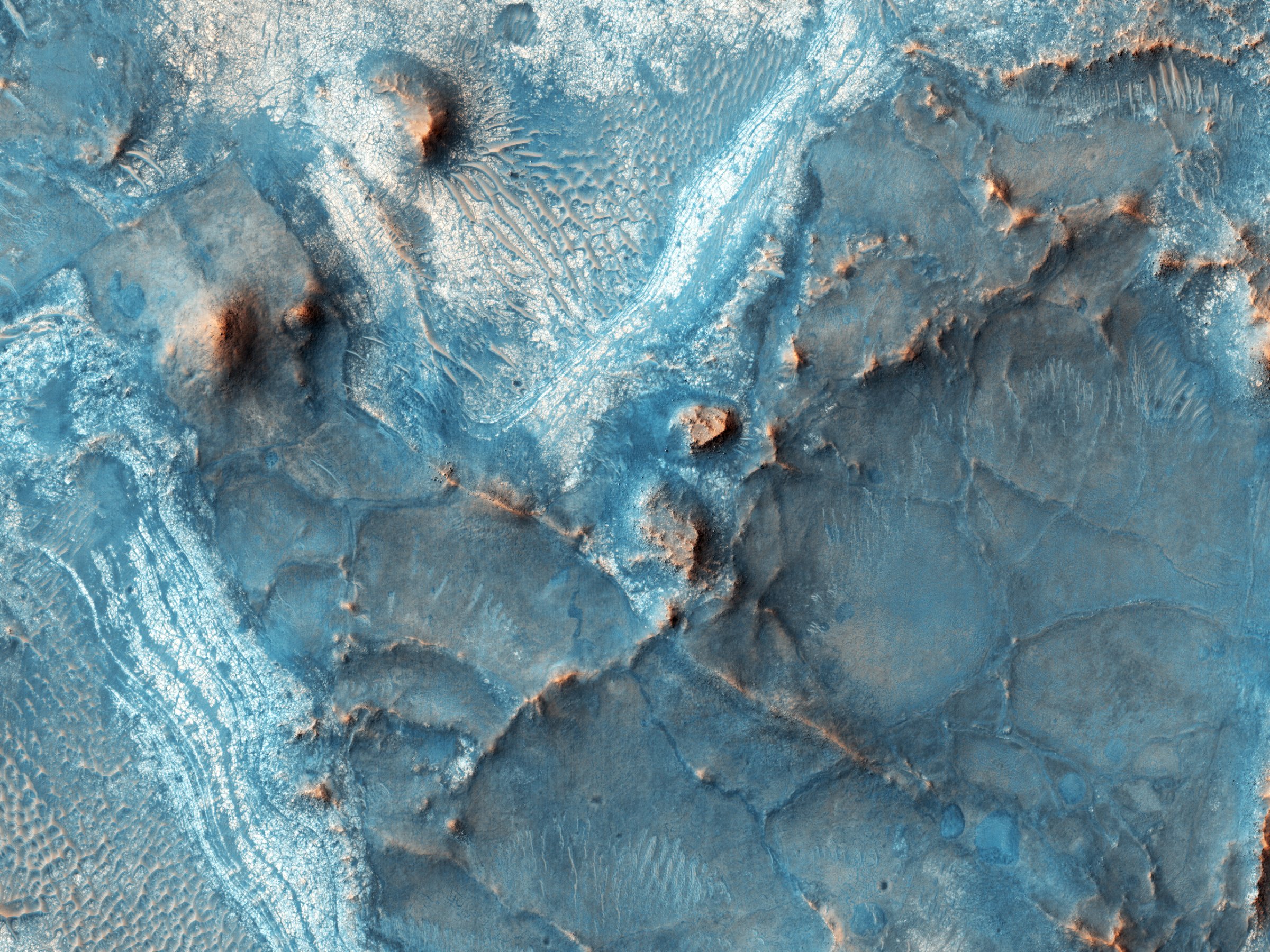
The Mars Reconnaissance Orbiter has recently released this color image of the Nili Fossae region, one of the most colorful regions of Mars.
Many regions of Mars are covered in a homogenous layer of dust or regolith, but here, the combination of exposed bedrock, sand dunes, and diverse rock composition allows the colors to come through brilliantly. The camera operates in visible wavelengths, the same as human eyes, but can also capture near-infrared wavelengths to obtain information on the mineral groups present.
The HiRISE (High Resolution Imaging Science Experiment) camera aboard the spacecraft is capable of returning images of the Martian surface with such a high resolution, that objects as small as one meter in length can be distinguished. Its stereo and color capabilities allow scientists to explore Mars in 3D and with compositional information, making it an important tool in investigating the safety of future landing sites for other missions, such as the Phoenix lander, MSL (Curiosity), or the Mars Science Laboratory.
More Must-Reads From TIME
- The 100 Most Influential People of 2024
- The Revolution of Yulia Navalnaya
- 6 Compliments That Land Every Time
- What's the Deal With the Bitcoin Halving?
- If You're Dating Right Now , You're Brave: Column
- The AI That Could Heal a Divided Internet
- Fallout Is a Brilliant Model for the Future of Video Game Adaptations
- Want Weekly Recs on What to Watch, Read, and More? Sign Up for Worth Your Time
Contact us at letters@time.com